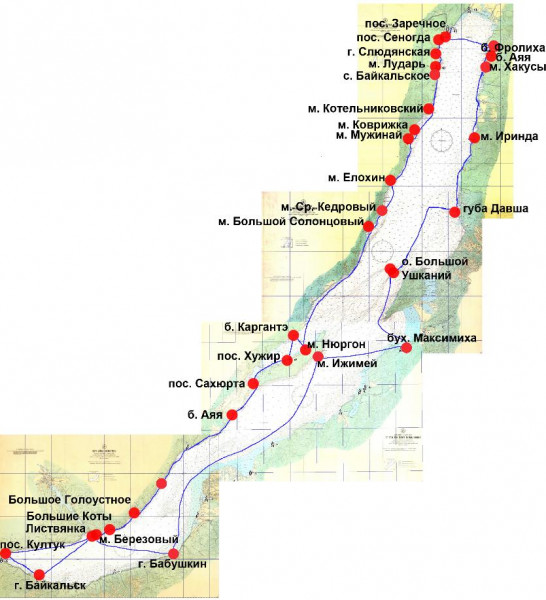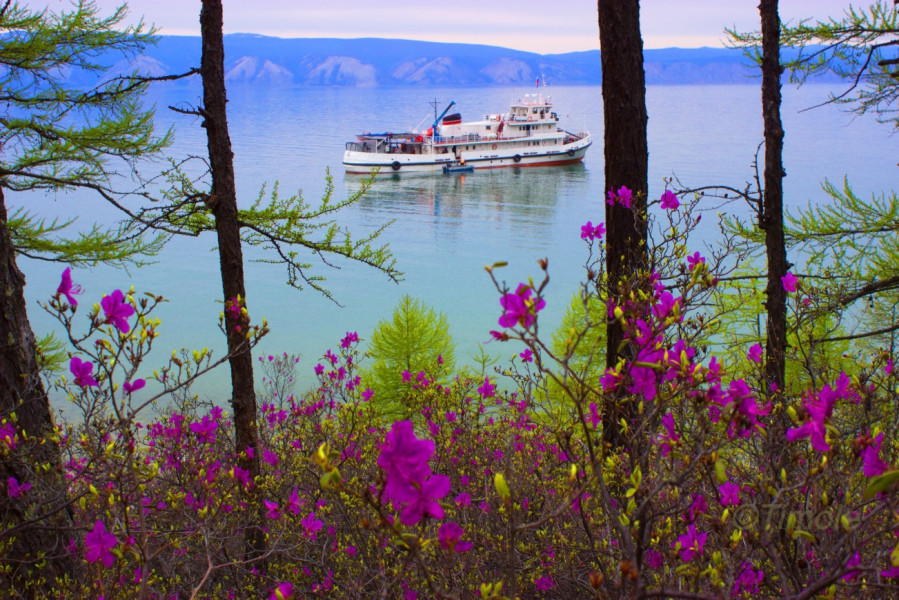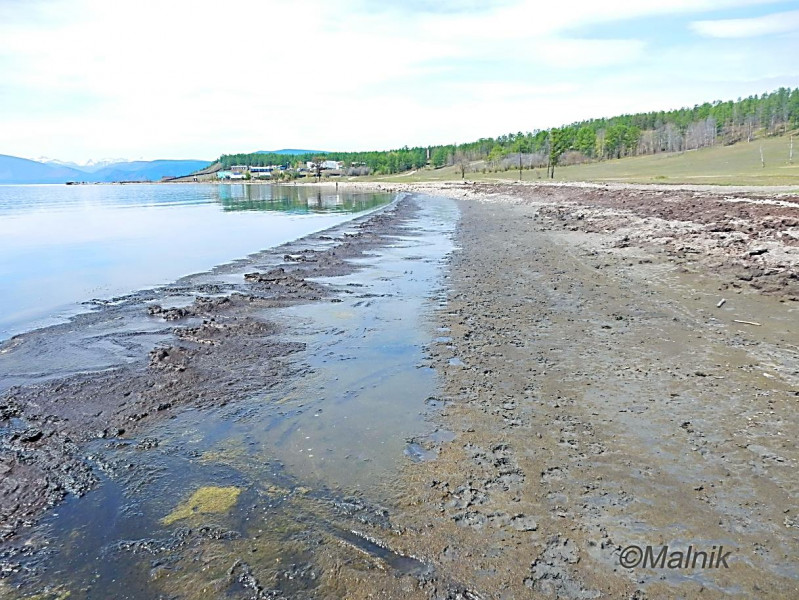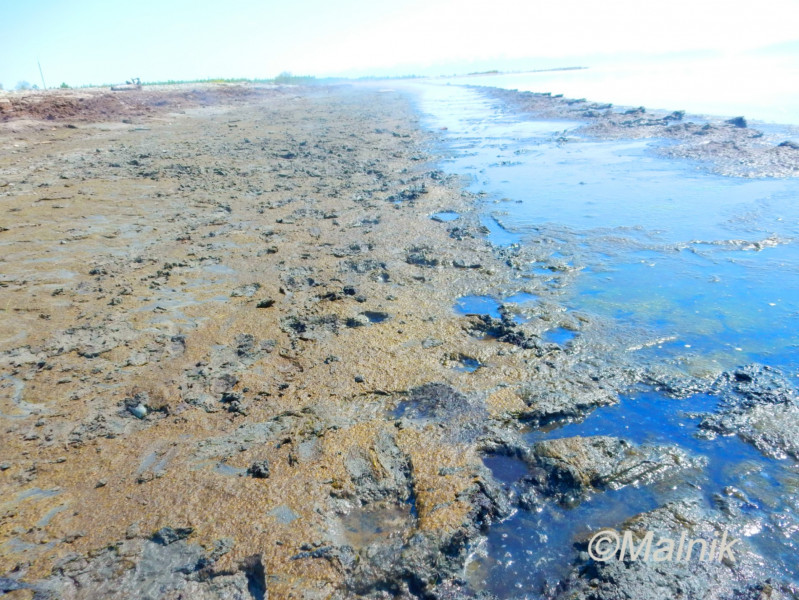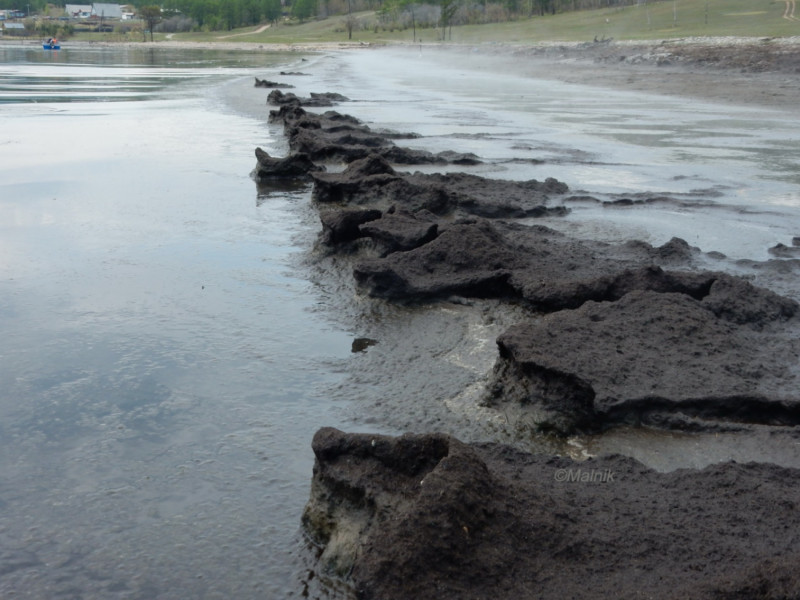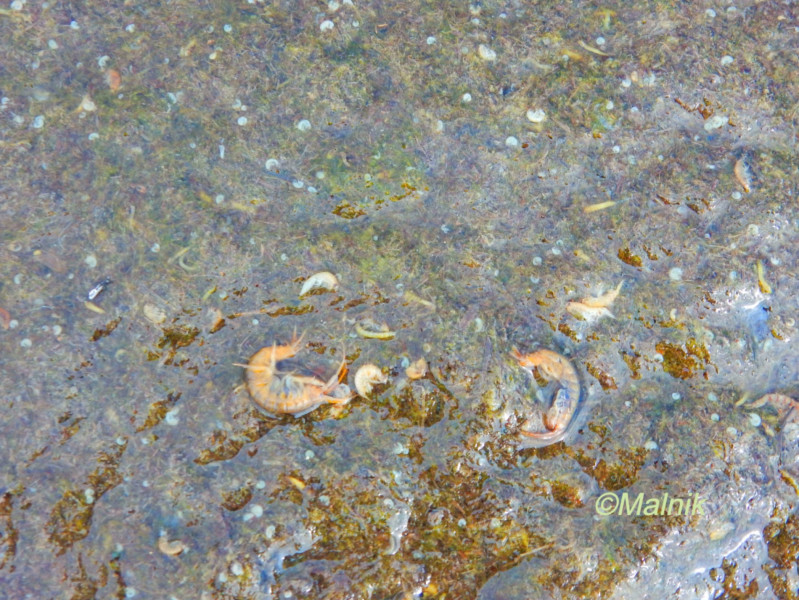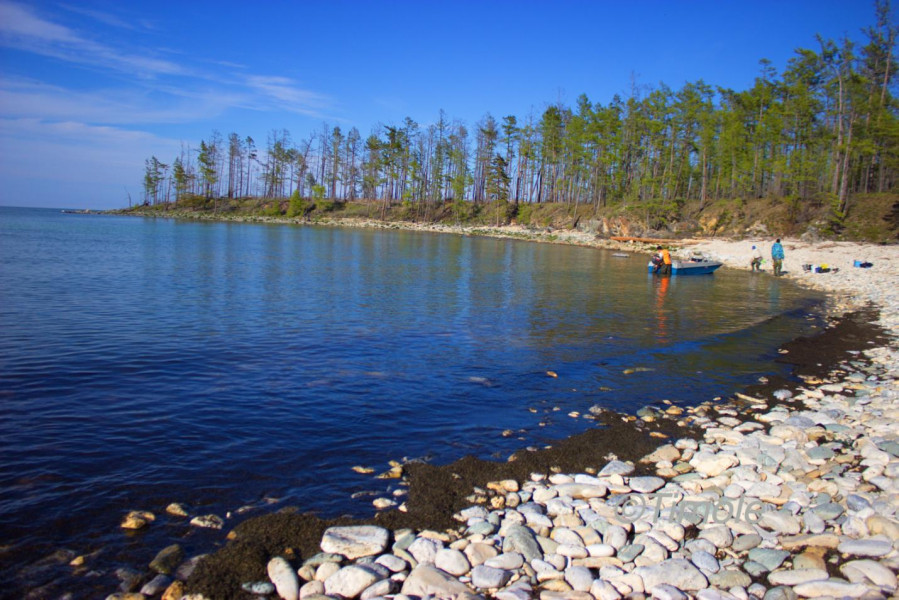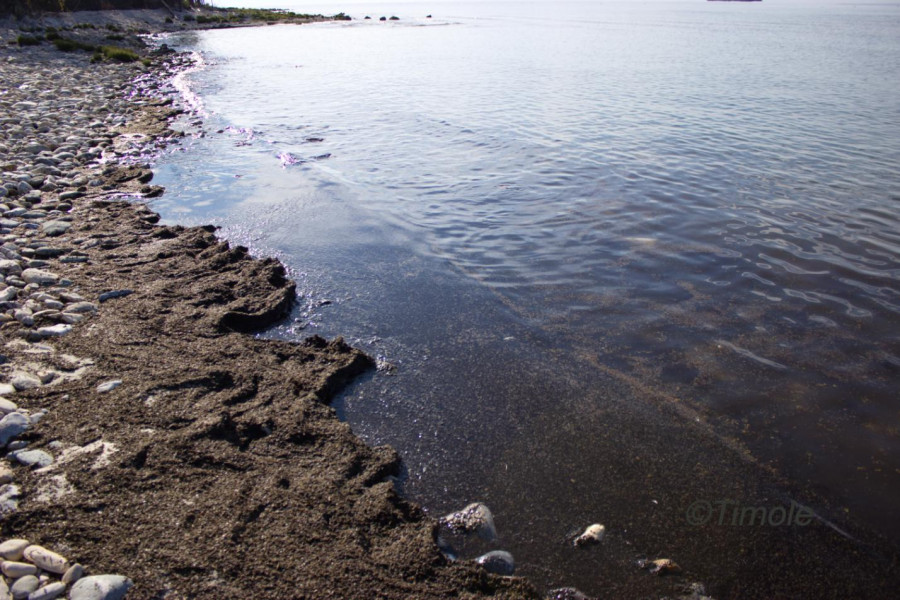An expedition on the RV "Akademik V.A. Koptyug" during June 03-15, 2021
Integrated fieldwork was done during June 03-15, 2021 aboard of the RV "Akademik V.A. Koptyug". The work was fulfilled within the State Assignments: 0279-2021-0007 “Integrated investigations of the littoral zone of Lake Baikal: multiyear dynamics and biodiversity of communities under the influence of various ecological factors; reasons and effects of negative ecological processes (directed by Oleg Timoshkin); 0279-2021-0014 “Study of role of precipitations in aquatic and terrestrial ecosystems of the Lake Baikal catchment area, identification of sources of air pollutants” (directed by Tamara Khodzher); 0279-2019-0003 “Ecological and economical assessment of functioning of freshwater biocoenoses from fundamental and applied points of view” (directed by Mikhail Makarov).
The aim of the expedition was an interdisciplinary study of the current state of the littoral zone of Lake Baikal in June 2021 from the point of view of the multiyear dynamics and alternation of dominating species of aquatic organisms with account of key factors in the context of large-scale negative ecological processes in the lake.
Main objectives were:
- To collect materials for multiyear series of monitoring of biomass and species composition dynamics of natural and extrinsic filamentous algal blooms in the Baikal shallow waters from annual and interannual points of view;
- To collect data on coastal algal debris at the areas of their accumulations as an indirect indicator of productivity of the littoral zone (rapid assessment);
- To collect data on changes of the state of tagged Lubomirskia baicalensis specimens in South Baikal;
- To take phytoplankton samples for creation of multiyear series of monitoring on dynamics of quantitative indicators and species composition in the littoral zone at the monitoring station (background areas and areas with an anthropogenic stress of different intensity);
- To assess the quality of littoral water under chemical indicators;
- To collect data for study of seasonal and interannual dynamics of microbiological indicators of the littoral zone in multiyear dynamics.
Preliminary results:
Main works and their place in the State Assignment 0279-2021-0007 “Integrated investigations of the littoral zone of Lake Baikal: multiyear dynamics and biodiversity of communities under the influence of various ecological factors; reasons and effects of negative ecological processes (directed by Oleg Timoshkin):
1) Subsection “Ecology and dispersal of alien algae of the genus Spirogyra over the littoral zone of Lake Baikal as at June, 2021”. We collected 236 quantitative samples of phytobenthos (mainly shoreline up to 1.5 m of depth, randomly from 3–7 m of depths), and more than 1000 underwater and microscopic pictures.
Preliminary results: an intravital analysis of phytobenthic samples with a focus on identification of alien Spirogyra species showed the presence of the so-called Spirogyra morphotype 1 and morphotype 2 (sensu Timoshkin et al., 2016; 2018) (the former being a clear sign of pollution of the lake with domestic wastewater) in the following habitats: the Listvennichny Gulf, Cape Obuteikha, in front of Bolshye Koty and Bolshoye Goloustnoye, Aya Bay, in front of Khuzhir, Cape Nyurgon (there were found the largest accumulations of this and other morphotypes after a severe storm, see the picture below); Cape Elokhin, in front of Baikalskoye, Senogda Bay, in front of Zarechnoye (see the picture below), Frolikha Bay, Ayaya Bay, in front of Davsha, Maksimikha, Babushkin and Kultuk. The studies were done in early to mid-June. Surface water temperature at a distance 100 m offshore was low and rarely exceeded 2.8–5°С. Nonetheless, we observed the algae in many places; their filaments were at different stages of development. “Old” filaments we found in abundance in Aya Bay, at the northern shore of Lake Baikal, etc. can be an indirect evidence of perennial development of the alga in that area. The “young” filaments that were extensively vegetating can be an evidence of a gradual shift of the beginning of Spirogyra morphotype 1 development from autumn towards early summer in polluted areas of the littoral zone despite low water temperature. There is no adequate explanation why filaments of this species were absent in sample from the places such as the Listvennichny Gulf, in front of the Baikalsk Pulp and Paper Mill, Sakhyurta where they were previously present in spring-summer samples. In general, Didymosphenia and Nostoc species dominated on stony ground of the most littoral areas (see the map) during the study time. Just as in the previous years, the worst environment was observed on beaches in front of Zarechnoye (North Baikal) (see the picture below): there were large coastal debris of phytodetritus mixed up with a new 2021 generation of filamentous algae. The absence of visible debris and relatively clean beaches in Senogda Bay in June 2021 do not seem to be an evidence of improved ecological environment in that area. It can be related with absence of severe storms. At the same time, we observed considerable accumulations of different-sized patches of black-green algal detritus on the sand bottom over the whole bay. The same conclusion may be drawn in the case of Maksimikha in the Barguzin Gulf. There are still blooms of cyanobacteria (mostly Nostoc sp.); their costal debris occur in some site of Big Ushkan Island (see the picture below). As we have previously stated, it could be related with the fire 2015 that spanned 70% of taiga in the island. At the same place, we have observed for a series of years a higher water turbidity and low water transparency indices in the littoral zone. The lowest biomass of benthic algae typical of early summer and ultraoligotrophic areas of the lake were found at Capes Bolshoy Solontsovy, Sredny Kedrovy (Central Baikal), Izhimey (Olkhon Island), Small Ushkan Island (Cape Tonky).
2) Subsection “Study of disease and injury dynamics in the endemic branchy sponge Lubomirskia baikalensis along two standard transects”. We got video records of samples of tagged sponges alongside the standard transects for identification of the ratio of sound and injured specimens. We collected ca. 10 specimens and thoroughly took picture of them. The material taken is being processed (it will take more than a year). The preliminary conclusion to be drawn: the dominant species of endemic Baikal sponges is still affected and the sponges are still dying.
3) Subsection “Study of peculiarities of phytoplankton blooms in the littoral zone in June 2021”. Phytoplankton was sampled at all stations at a distance of 100 m offshore. The material is being processed (it will take more than a year).
4)Subsection “An integrated and interdisciplinary analysis of biotic and abiotic parameters of the littoral zone of the lake in June 2021”. More than 224 samples to assess ecological state of the littoral communities were collected; the abiotic parameters such as t0C, рН, transparency, hydrochemical and biogeochemical indictors were measured. The material is being processed (it will take more than a year).
Preliminary results of microbiological assessment of the Baikal littoral zone: bad water quality was registered near Kultuk, in Aya Bay and the Khuzhir Gulf. Thermotolerant coliforms and enterococci succeeded the regulatory values, 392 CFU/100 mL and 152 CFU/100 mL, respectively, at the mouth of the Medlyanka River (Kultuk). Near the mouth of the Medlyanka River the number of enterococci was 3-fold higher the signal value (170 CFU/100 mL). The values of thermotolerant coliforms in Aya Bay and the Khuzhir Gulf were higher than allowed by regulations (130 and 126 CFU/100 mL, respectively). The best sanitary situation of water was observed in conservation areas.




